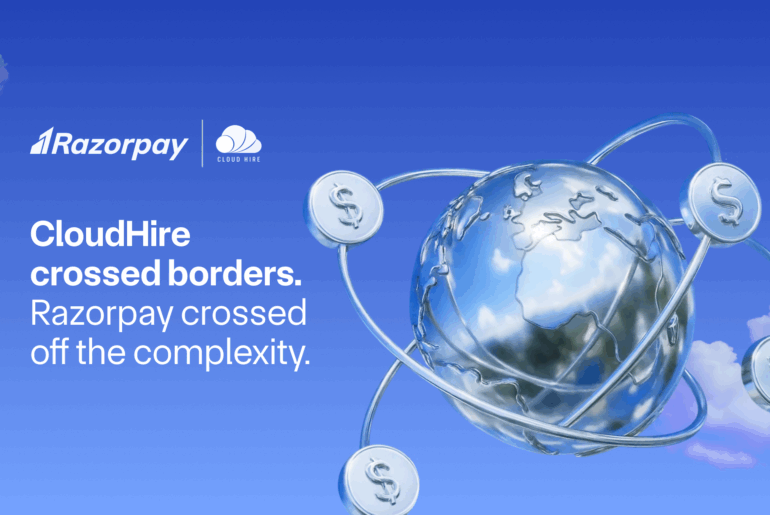Table of Contents
What is the Difference Between 2D And 3D Payment Gateway?
The main difference between 2D and 3D payment gateways is their security features. A 2D payment gateway is a basic payment gateway that processes payments with essential details like the credit card number and expiry date. In contrast, a 3D payment gateway is a more secure option that processes payments using one-time passwords (OTPs) or Two-Factor Authentication (2FA).
Read More About: What is Payment Gateway?
Feature |
2D Payment Gateway |
3D Payment Gateway |
| Full Form | Two-Dimensional Payment Gateway |
Three-Dimensional Payment Gateway
|
| Function | Processes payments using card details like card number, cvv and expiry date |
Processes payments with an additional OTP for verification
|
| Domains | Commonly used for physical and online sales where emphasis is on speed and simplicity. |
Ideal for digital goods and services where security is a priority.
|
| Added Security | Basic security, relying solely on card details |
Enhanced security with an extra OTP layer, reducing fraud risk
|
| Parties Involved | Involves two parties: the customer and the merchant |
Involves three parties: the customer, the merchant, and the payment processor
|
What is 2D Payment Gateway?
A 2D payment gateway is a basic payment processing software that allows customers to make online purchases with minimal card information, such as the card number and expiration date, without additional security measures like OTP or 3D Secure.
2D payment gateways are widely used in countries like the US, Canada, the UK, Australia, and India, where online shopping is popular and customers prefer fast and convenient payment methods. Despite security concerns, these regions frequently prefer the simplicity of 2D payment gateways for e-commerce transactions.
The lack of additional security elements, such as OTP in a 2D payment gateway, allows for faster, smoother transactions but also raises the possibility of fraud and unauthorized activities. To protect client data, you must use strong security precautions such as encryption and PCI DSS compliance.
What is 3D Payment Gateway?
A 3D payment gateway is secure payment processing software that allows customers to make online purchases using the 3D Secure protocol, which includes OTP (One-Time Password) and 2FA (Two-Factor Authentication) to authorize payments.
A 3D payment gateway guarantees that only the authorized cardholder can approve the transaction. The customer must enter a one-time password (OTP) sent to their registered email address or mobile device. This extra security layer significantly reduces chargebacks and fraud.
3D payment gateways are common in areas where internet security is a top priority. They provide e-commerce companies with a dependable means of safeguarding sensitive payment data and fostering client confidence.
Types of 3D Payment Gateways
What is 3D Secure 1?
In 1999, Visa introduced 3D Secure 1, an XML-based protocol also known as “Verified by Visa.” This system added an extra layer of security to online credit card transactions by requiring a static password at checkout. While it successfully reduced e-commerce fraud, it was primarily designed for desktop use and was not mobile-friendly.
As a result, users’ experiences on smartphones were less than ideal. The strict authentication procedure frequently produced unresponsive or poorly viewed sites on mobile devices.
What is 3D Secure 2?
3D Secure 2 is the main card authentication method used to meet Strong Customer Authentication (SCA) requirements in Europe and also serves as a key mechanism for businesses to request SCA exemptions. As an updated version of the previous system, 3D Secure 2 improves online and mobile payment experiences with its multi-device compatibility and support for various authentication methods like biometrics and push alerts. It reduces checkout disruptions and uses risk-based evaluations to allow many low-risk transactions to proceed without requiring additional user authentication.
Key improvements over 3D Secure 1 include:
- Improved User Experience: A more seamless checkout with fewer redirects.
- Mobile Optimization: The 3D Secure 1 is made with user-friendly, responsive mobile interfaces in mind.
- Data Utilization: A lot of data is used for more seamless transactions and adaptive authentication.
Pros of 2D Payment Gateways
1. Ease of use and simplicity
With 2D payment gateways, users may swiftly complete transactions without needing extra authentication, thanks to an easy checkout process.
2. Widespread Adoption
Due to their extended market presence, 2D gateways are well-known and well-liked by customers and retailers.
3. Lower Costs Compared to 3D Payment Gateways
2D gateways are generally more affordable for organizations, particularly startups, as they come with cheaper setup and transaction fees. This helps in making the gateway accessible to smaller businesses or those with limited technical resources.
Cons of 2D Payment Gateways
1. Increased Risk of Fraud
Without supplementary security protocols, 2D payment gateways are more susceptible to fraudulent operations, including identification theft and unauthorized transactions.
2. Potential for Chargebacks
The possibility of chargebacks is increased for merchants without robust verification, potentially resulting in monetary losses.
3. Limited Liability Protection
Since they frequently bear the burden of evidence, merchants who use 2D gateways may be less protected against losses resulting from fraud.
Pros of 3D Payment Gateways
1. Enhanced Security
3D payment gateways offer additional protection by using OTP verification, making it far more difficult for scammers to succeed.
2. Reduced Chargebacks
The additional authentication step protects merchants against financial losses from fraudulent transactions and thus reduces chargebacks and disputes.
3. Increased Customer Confidence
Customers feel more secure and are more likely to finish their transactions when stricter security measures are in effect.
4. Liability Shift in the Case of Fraud
Many 3D gateways offer merchants enhanced liability protection by assigning a portion of the fraud obligation to the payment processor.
Cons of 3D Payment Gateways
1. More Complex Setup and Implementation
Configuring a 3D payment gateway can be challenging and needs technical expertise, which may prolong the time it takes to get everything up and going.
2. Potential for Increased Costs
These gateways may have additional charges for enhanced security measures and higher transaction fees.
3. May Require Additional Steps for Customers
A more difficult checkout process may lead to more individuals leaving their carts, as the OTP verification appears to do.
How to Choose Between 2D and 3D Payment Gateways?
Here are some key factors on how to choose a payment gateway:
1. Based on Industry Requirements
Businesses have different requirements for payment security. While retail firms with smaller transaction amounts may find 2D gates adequate, e-commerce enterprises with high-value transactions or digital products benefit from 3D gateways.
2. Business’s Transaction Volume
A high volume of transactions raises the possibility of fraud, which increases the appeal of 3D gateways. Companies with lesser transaction volumes could choose to use more affordable 2D gateways.
3. Risk Tolerance
3D payment gateways provide extra protection via OTP authentication, making them a popular choice for businesses with low-risk tolerance. Companies that can afford to take risks can utilize the more convenient and simpler option of a 2D payment gateway.
4. Market and Customer Expectations
Gateway selections are influenced by customer preferences. Clients who prioritise a speedy checkout process may prefer simple 2D gateways, even though safe 3D gateways increase confidence.
5. Cost-Benefit Analysis
When selecting a payment gateway, it is necessary to evaluate costs and benefits. High-risk organizations may find that the higher fees and setup costs of 3D gateways are justified by their benefits, which include fewer chargebacks and increased customer trust. Though more vulnerable to fraud, 2D gateways are less expensive.
Read More About: How to Choose a Payment Gateway for Your Business?
Conclusion
Choosing the right payment gateway involves balancing security and usability. 2D gateways offer affordability and ease of use but come with a higher fraud risk. In contrast, 3D gateways provide enhanced security through additional authentication, reducing fraud and chargebacks, though they may be more complex and costly. Consider your industry, transaction volume, risk tolerance, and customer expectations to select the most suitable option for a secure and efficient payment process.
Frequently Asked Questions
1. What is the main difference between 2D and 3D?
2D and 3D payment gateways are primarily different because 2D gateways process payments using only basic card information, whereas 3D gateways require an extra one-time password (OTP) verification step to boost security.
2. What is the difference between 2D and 3D interface?
A 2D and 3D interface differ primarily in how their dimensions are represented. A 3D interface simulates three-dimensional space and adds depth, making the experience more realistic and immersive. A 2D interface shows items in two dimensions, emphasising height and width.
3. Are 3D Payment Gateways More Secure Than 2D Gateways?
Due to an extra layer of authentication using OTP, 3D payment gateways are more secure than 2D gateways, lowering the risk of fraud and elevating client confidence while completing online transactions.
4. Do 2D And 3D Payment Gateways Offer Fraud Protection?
The degree of fraud protection provided by 2D and 3D payment systems varies. While 2D gateways offer card details for basic security, 3D gateways dramatically lower the risk of fraud by adding further security features like OTP and 2FA verification.
5. Can I Use A 3D Payment Gateway For All Types Of Transactions?
No, you cannot use a 3D payment gateway for all types of transactions. 3D payment gateways are commonly used for online transactions where the consumer is not physically present to complete the transaction. For in-person transactions at physical stores, a 2D payment gateway that only requires card details is more commonly used.



